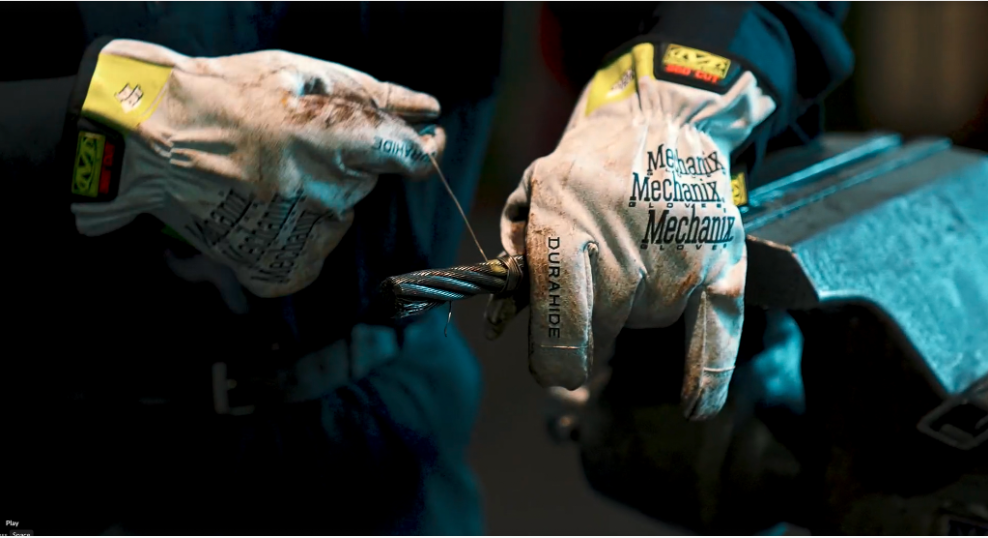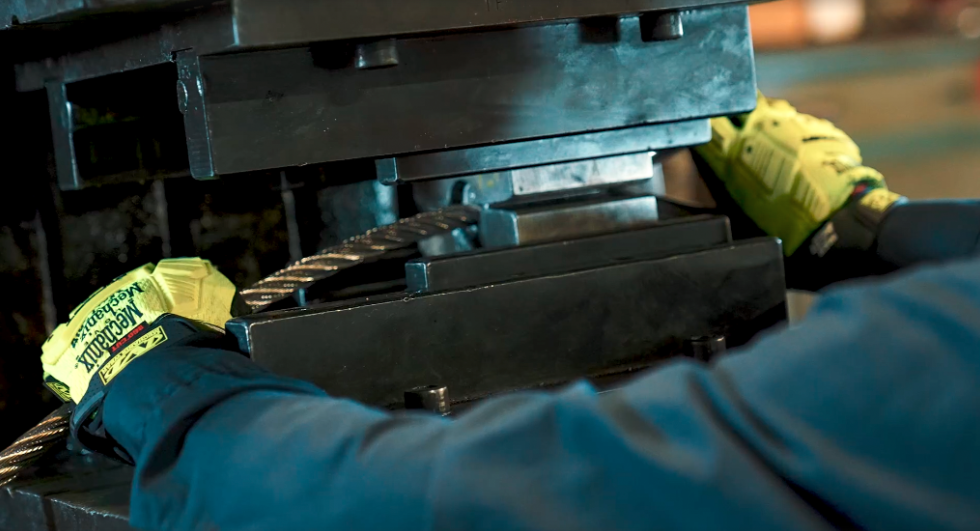Safety Manager's Guide to Puncture Resistance
Picture this: a plant manager does a risk assessment to determine cut and puncture hazards on the job. They pick a PPE that provides excellent cut resistance, but assume that puncture resistance will be at the same level. After all, both hazards involve sharp things, right?
Wrong.
This is a myth that can get people hurt.
Puncture injuries can occur in various industries: from needlesticks in healthcare, janitorial, or waste management roles, cleaning up broken glass in labs or food manufacturing, to sharp edges on machinery or environmental hazards with plants and wildlife.
Understanding puncture-resistant properties in gloves and apparel will help in the proper selection of PPE.

Puncture-resistant standards
There are two primary puncture-resistant standards that use the same testing requirements. The United States standard is ANSI/ISEA 105, addressing glove material; the European standard is EN 388:2016, pertaining to glove material associated with mechanical risk. A third entity, the ASTM, provides testing methods for gloves and apparel related to needle (hypodermic) puncture hazards.
ANSI/ISEA 105
The most current version at the time of this writing is the 2016 update. ANSI – the American National Standards Institute – and ISEA – the International Safety Equipment Association – partner in the development of PPE standards to finalize and present consensus standards to industry.
ANSI/ISEA 105 specifically addresses hand protection for chemical and industrial applications, including puncture resistance. This standard provides performance characteristics that are needed in the materials to pass various levels of standardized testing and then labeled on the glove, accordingly. This same standard applies to cut- and abrasion-resistance, as well.
The standard puncture test actually uses the EN388 puncture probe and addresses hazards within the medical, sanitation, and recycling industries, using a large-gauge probe similar to the size of a ballpoint pen. With the 2016 update, the new puncture test uses a smaller 25-gauge needle for hypodermic exposures.
A sampling test specimen from the glove is used with a stylus to penetrate the material, measuring its tensile strength. The test measures the amount of tensile strength needed for the material to “fail.” The measured results are then used to categorize the puncture-resistance level of the glove. The puncture-resistance rating for ANSI 105 ranges from 1-5, based on the measured newtons of force ranging from 10-50, that penetrates the glove material.
EN388:2016+A1:2018
The EN388 standard changed significantly from its 2003 update to the 2016 update, adding the hypodermic, smaller gauge probe for testing materials for punctures, including needlesticks. An additional amendment was added in 2018 but that amendment was related to cut-resistance.
For puncture resistance ratings, as this is the test used for determining the ANSI categories, testing for punctures is as described above (ANSI/ISEA 105), again, ranging from 10-50 newtons of force. The markings, however, are based on a 1-4 numeric scale for EN388 compared to the 1-5 numeric scale for ANSI.
ASTM F2878
ASTM – formerly known as the American Society for Testing and Materials – developed the standard test method used for rating puncture-resistant gloves based on hypodermic needle penetration. With the use of a finer, smaller gauge probe, puncture resistance for hypodermic needles is based on a range of 0-10 newtons. This results in a rating of levels between 0-5.
Remember, a hypodermic needle will penetrate fabric with less force than a larger, ballpoint pen-size probe. The ANSI and EN ratings use a scale of 10-50 newtons of force; ASTM ratings use a scale of 0-10 newtons of force.
Testing and ratings summary
Each organization has its own markings and labels on gloves. Both the ANSI (1-5) and EN (1-4) ratings provide blunt or large-bore puncture protection, produced by the same test; An ASTM (0-5) rating is what classifies the glove as “needlestick” or hypodermic puncture protection, produced by a similar test but with a sharp, much smaller caliber probe that requires much lower newtons of force in its test.
A glove, then, with an ANSI puncture rating of 5 and EN rating of 4 will have the maximum level of blunt or large-bore puncture protection, as tested by both standards.
A designated needlestick glove (small-bore, hypodermic protection) is labeled separately on the glove with a single digit between 0-5, placed in an ASTM box that will be clearly visible on the glove itself.
When assessing a glove or apparel for puncture hazards, first determine what hazard is: does it involve blunt or large bore penetrating objects, or hypodermic, thin, small-bore penetrating needles? The testing and ratings are different for each so you must know which type of glove is needed and what level of protection is necessary.

Glove Labeling
Each organization has its own rating system and glove label. It’s important to know how to interpret the labels.
The EN label uses a 4-digit (xxxx) system. The first digit represents abrasion-resistance, the second is cut-resistance, third is tear-resistance, and the fourth is puncture-resistance. Two additional alpha-designations may be seen, designating the newer cut-resistance standard and impact-resistance, respectively. If an ‘X’ replaces any of the digits, it means the test for that digit was either not performed or is not applicable for the glove. For example, the EN label may read, “3X44” which would mean the coupe test for cut resistance was not conducted. Generally, that would mean there would be an alpha-designation (A-F) to provide the cut resistance rating using the EN ISO 13997 (TDM) test was performed on the glove.
For puncture resistance, the fourth digit is the series is what matters and grades the blunt, large bore puncture test.
The ANSI/ISEA label has been updated to match the latest updates in the ANSI/ISEA 105 standard. For gloves with puncture-resistance ratings, the glove will have a 5-sided (pentagon-shaped) box. The alpha-numeric digit that is top center (example, A5) is the cut resistance rating. A number on the bottom left is the glove’s abrasion resistance rating; a number on the bottom right is the puncture resistance rating.
The ASTM label, which will appear on gloves designated as needlestick-resistant, is also pentagon-shaped and is clearly labeled ‘ASTM’, ‘F2878’, with a centered single digit number (0-5, with 5 as the highest) that identifies its needlestick resistance level. If a glove is designated for needlestick protection, it will have the ASTM pentagon marking on the glove.
Who needs puncture resistance?
Plant managers should conduct a thorough risk assessment so that they can identify what level of protection is necessary. That said, here is a quick guide this gives a general idea of what kind of tasks/industries need certain levels of protection.
Note that these recommendations are based on the 1-5 ANSI/ISEA puncture resistance rating, and can vary based on the specifics of each job/location/situation:
ANSI Puncture Level 1 – Paper/Cardboard Cuts, Light Material Handling, Parts Assembly
ANSI Puncture Level 2 – Light Construction, Material Handling, Parts Assembly, Packaging
ANSI Puncture Level 3 – Construction, Light Metal Stamping, Light Glass Handling, Manufacturing
ANSI Puncture Level 4 – Construction, Metal Stamping, Glass Handling, Recycling, Injection Molding
ANSI Puncture Level 5 – Oil & Gas, Mining, Heavy Construction, Demolition, Manufacturing, Fabrication
Mechanix Wear Solutions
As a global PPE manufacturer, Mechanix Wear partners with employers to provide an active and proactive role in finding and designing the best in form, feel, and function in personal protection. Directly working with employers and front-line employees in various industries, Mechanix Wear conducts onsite evaluations and case studies to ensure the right solutions are found and available.
Mechanix Wear experts want employers to understand the specific nature of risks so the most effective protection levels can be provided. Through the Mechanix Wear’s educational blogs and onsite visits, employers can be assured of making the right selection of PPE for the identified hazard exposures.
Solution examples
When you require protection against punctures, you need apuncture-resistant glove of highest quality. The Max Cut™ Leather Utility F9-360 Glove provides cut-, abrasion-, and puncture-resistance that includes 360-degrees of hand protection rather than just the palm, like many of the competitors offer.
The Max Cut™ glove is available in five sizes to ensure proper fit and offers high-end protection, performance, and comfort. This glove is perfect for tasks in handling sheet metal and glass, heavy fabrication, and oil/gas and mining operations, to just name a few.
For needlestick protection, the go-to glove of choice is Mechanix Wear’s Industrial Needlestick Hi-Viz glove. This glove provides a full range of protection related to cuts, abrasions, punctures, and needlesticks! It is water resistant for use outdoors or wet environments, where exposures may come from handling waste, recycling, construction, towing and cable handling, and other similar tasks.
Highly protective, this glove also allows for dexterity for handling materials, breathable for long-term wear, and comfortable in design and with its availability in multiple sizes.